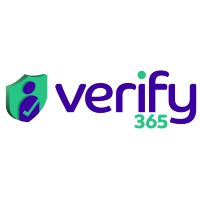 By Azeem Rashid, Director of Legal Futures Associate Verify 365
By Azeem Rashid, Director of Legal Futures Associate Verify 365
Regulators in the legal sector are grappling with how alternative currencies such as crypto fit into the existing legal and regulatory frameworks such as AML and Source of funds checks.
The Law Society of Scotland (LSS) now believes the challenge for the legal sector is identifying and remaining compliant with AML regulations when funds derived from cryptocurrencies are used in property and conveyancing matters. Some of the key challenges include clients and associated parties maintaining anonymity coupled with a volatile and highly unstable market.
The term Cryptocurrency – or crypto – relates to the idea that digital currencies or assets may be used as a method of payment in which transactions are verified and records maintained by a decentralised system using cryptography, rather than by a centralised authority.
The rise in popularity has meant that several businesses around the world now accept cryptocurrency as a form of payment for goods and services including law firm “gunnercooke”, which appears to be the first major UK firm to take payments in the form of crypto.
In a recent report the Solicitors Regulation Authority (SRA) said they anticipate the volume of clients wishing to use funding that derives or has derived from cryptocurrency will increase over the coming years and issued guidance for law firms who are dealing with these clients.
How can law firms keep up with crypto?
The recent SRA guidance suggests that the decision to act for a client whose funds derived from crypto should be considered and documented in detail within the client and matter risk assessments, and in the context of the practice’s wider risk appetite. The practice should have in place appropriate controls to mitigate any risks present and document these accordingly.
Under Anti-Money Laundering (AML) regulations, solicitors need to go back as far as is needed to build a clear picture of how the client accumulated their money for the transaction. For some, it may be as little as six months (particularly if that shows a big event like a significant gift), for others it might require looking back several years. This is a case-by-case assessment and should reflect the level of risk that fee-earners identify in their client and matter risk assessments.
The guidance suggests that it is likely this “requirement” will not change for crypto transactions. At the core of the AML due diligence for crypto must be a clear answer to the question “how did the client accumulate the funds for this transaction” and the SRA confirmed that there is “no one-size-fits-all” when it comes to applying risk-based, robust, and holistic due diligence.
The source of funds checks for crypto transactions will need to go beyond where or whom the funds have come from and look at why they have the money, along with answering the question of whom your client is. So in short, identifying the source of their funds is one of the most valuable checks lawyers can do to protect their firm from the risk of money laundering and terrorist financing.
Source of funds Advisory Note to law firms
The Law Society of Scotland issued an Advisory Note and this is something which law firms must now consider as part of their due diligence considerations in relation to source of funds and source of wealth:
- Is this within your practice’s risk appetite?
- Can you establish and evidence how the client funded the original acquisition of the cryptocurrency (i.e., their original source of funds/wealth). Is the explanation in line with your knowledge of the client, and can this be evidenced?
- Do you have access to any specialist reports (often called Blockchain analytic scans) which provide an understanding of the provenance of the funds used? Can the client provide these?
- Has the client used a mixer/tumbler service? The client should be able to provide evidence that such a service has not been used by showing the end-to-end journey of the crypto through their wallet.
Finally, these questions should be evidenced, clearly articulated, and recorded across the risk assessment and due diligence performed for each crypto client.
How can AML technology help with Crypto Source of Funds verifications?
Azeem Rashid, Director of Verify 365, a digital client onboarding company that helps lawyers undertake AML and ID checks believes the right technology can help law firms assess risk and stay compliant whilst also delivering a better service to their clients.
“Being able to accurately identify and assess the funds deriving from cryptocurrencies and other digital assets will be critical for the legal sector and it’s good to see the regulators are aware of the anti-money laundering risks associated with it. Naturally, the risk factor will be higher where cryptocurrency is used by clients, but this alone does not make it an illegitimate source of funds. Solutions like Verify 365 have been developed to provide law firms with instant crypto verifications and account information with automated user consent and impersonation check in 195 countries using Open Banking and allows for real-time verifications that can be directed to your decision engine for automation and improved user experience for both law firms and end consumers.”
Verify 365 adoption within the legal sector is on the rise. Accelerating in line with the post-pandemic boom, law firms are quickly adopting Verify 365 in order to improve their AML compliance, digital onboarding and source of crypto funds checks.
“From immersive identity verification tools to digital onboarding facilitation, law firms from all over the world are jumping on these technological trends. In order to automate their AML processes and meet heightened client demand, smart lawyers are now investing in Verify 365’s new forms of AI-driven software solutions to remain productive in fast-paced digital environments,” added Azeem.













